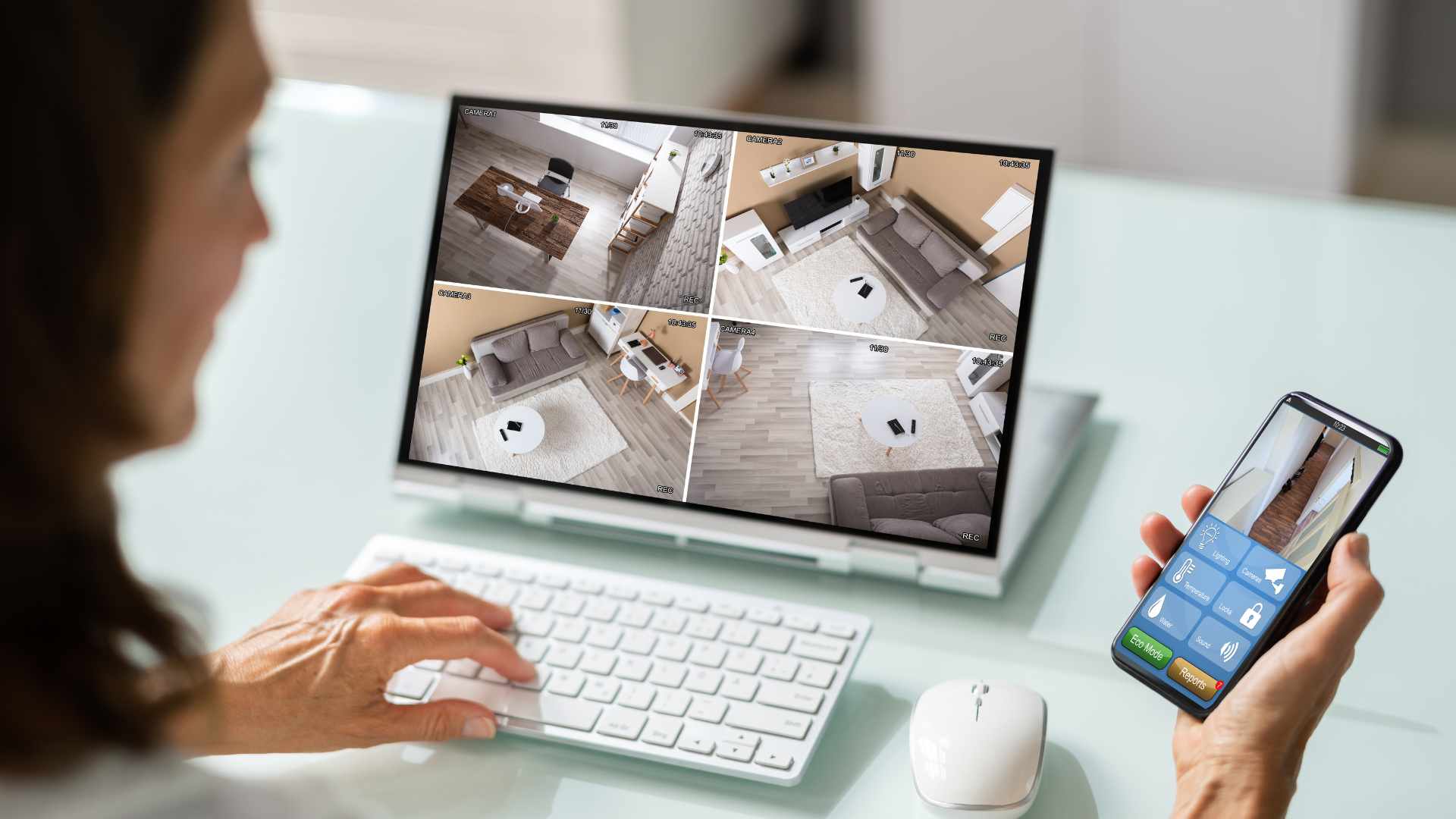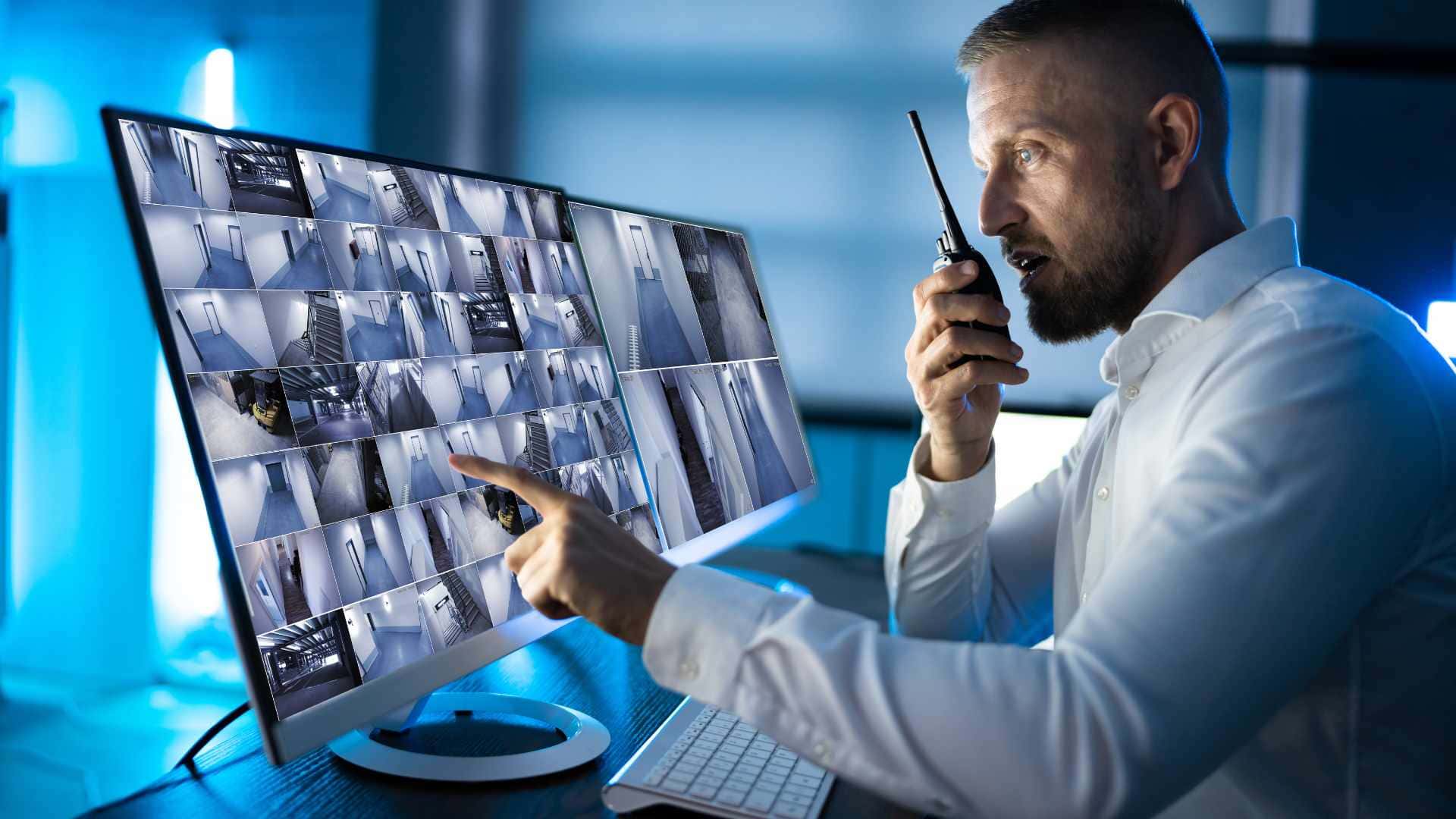Choosing the best-automated security system could feel like an impossible challenge. Whether you’re a tech enthusiast ready to dive headfirst into the newest technologies or a homeowner searching for dependable and user-friendly solutions, knowing what to look for is crucial. To assist you in making a well-informed decision regarding the efficient protection of your house, this blog will delve into the essential components that characterise a contemporary automated security system. Let us walk you through the essential features that will ensure the safety of your house and alleviate any concerns you may have, such as real-time monitoring, intelligent threat identification, and seamless smart home connection.
Features To Look for in a Modern Automated Security System
Real-Time Monitoring and Alerts
Real-time monitoring is a crucial technology that delivers continuously updated data about systems, processes, or events with minimal latency between data collection and analysis. This capability allows organisations to quickly detect anomalies, performance issues, and critical events, enabling prompt action to mitigate potential problems. It involves collecting data from various sources such as on-premises hardware, networks, security systems, virtualized environments, and cloud-based applications.
Real-time alerts provide immediate notifications about current trends in network traffic. Configuring real-time alerts involves defining criteria for the alert and specifying the method and content of the notification. Alerts can be sent via email or HTTP requests to a web server, ensuring that relevant stakeholders are informed promptly.Real-time monitoring and alerting are essential for maintaining system performance, security, and availability. By implementing effective monitoring strategies and leveraging real-time alerts, organisations can proactively manage IT environments, quickly respond to issues, and ensure optimal operation.
Intelligent Threat Detection
Intelligent threat detection is a proactive approach to identifying and mitigating potential cybersecurity threats before they can cause significant damage. This process combines advanced technologies, comprehensive threat intelligence, and sophisticated response strategies to safeguard organisational assets against increasingly sophisticated cyber threats. Effective threat detection requires continuous monitoring, detailed analysis, and prompt response mechanisms to minimise the impact of malicious activities.
Intelligent threat detection is vital for maintaining a strong security posture in today’s complex cyber threat landscape. By integrating advanced threat intelligence, continuous monitoring, and proactive response strategies, organisations can effectively detect and mitigate potential threats, ensuring the safety and integrity of their critical assets.
Integration with Smart Home Devices
Smart home integration involves the use of network-connected devices to perform remote control and management of various systems in a home, such as lighting, heating, security, and monitoring. This technology enhances convenience, security, and energy efficiency, making homes more comfortable and luxurious.
Integrating smart home devices offers numerous benefits, from enhanced convenience and security to significant environmental advantages. By adopting smart home technology, homeowners can create a more efficient, sustainable, and comfortable living environment. Embracing smart home integration not only improves the quality of life but also contributes to a greener future, making it a worthwhile investment for modern living.
A smart home connects your appliances and automates tasks through a smart home system, typically controlled remotely. This system can program sprinklers, monitor security systems and cameras, and control appliances like refrigerators and HVAC systems. By leveraging advanced technology, smart homes provide significant benefits in terms of energy efficiency and user convenience.
Cloud Storage and Data Security
As businesses and individuals increasingly rely on cloud storage, understanding how to secure data in these environments becomes essential. Cloud data security involves protecting data from unauthorised access, breaches, and other cyber threats while ensuring it remains accessible to authorised users.
Cloud data security refers to the practice of protecting digital information stored in cloud environments. It encompasses technologies, policies, and processes designed to ensure data confidentiality, integrity, and availability. This security framework is vital as more organisations move their data from traditional on-premises storage to cloud-based platforms.
Professional Monitoring vs. Self-Monitoring
When it comes to securing your home or business, choosing between professional monitoring and self-monitoring is a significant decision. Each option has its own set of advantages and disadvantages, and the best choice depends on your specific needs, lifestyle, and budget. This blog explores the differences, benefits, and drawbacks of professional monitoring and self-monitoring to help you make an informed decision.
Both professional monitoring and self-monitoring have their merits and drawbacks. Professional monitoring offers enhanced security and peace of mind with immediate response capabilities, making it suitable for those who prefer a hands-off approach. On the other hand, self-monitoring is a cost-effective option that provides direct control and flexibility, ideal for those who prefer to manage their own security. Assess your specific needs, budget, and lifestyle to determine which option is best for you.
Cost Considerations
Investing in a home security system is a crucial decision for safeguarding your property and loved ones. While the initial costs might seem high, the long-term benefits often outweigh the expenses. This blog explores the cost considerations associated with home security systems, including initial setup, ongoing maintenance, and potential savings on home insurance.
Investing in a home security system involves considering various costs, from initial setup and installation to ongoing maintenance and monitoring fees. While these expenses can add up, the benefits of enhanced security, peace of mind, and potential insurance savings often make it a worthwhile investment. By carefully evaluating your needs and exploring different options, you can find a security system that fits your budget and provides the protection you need.
For instance, in Australia, the cost of installing a home alarm system ranges from $300 to $4,000, depending on the complexity and size of the system.
Comparing Wired and Wireless Systems
Choosing between wired and wireless systems can significantly impact both initial and ongoing costs:
Wired Systems:
- Pros: Generally more reliable and harder to disable. Suitable for larger homes with more extensive security needs.
- Cons: Higher installation costs and less flexibility for upgrades or relocations.
Wireless Systems:
- Pros: Easier and cheaper to install, flexible, and can be integrated with smart home devices.
- Cons: May require frequent battery replacements and can be susceptible to interference.
Potential Savings with Home Security Systems
Installing a home security system can also lead to savings, particularly on home insurance premiums. Many insurance providers offer discounts for homes with monitored security systems, as they reduce the risk of theft and damage. It’s essential to check with your insurance company to understand the potential savings and any specific requirements for qualifying for discounts.
Cost-Effective Security Camera Options
For those looking to avoid monthly fees, several security cameras offer local storage options:
- Local Storage: Cameras with built-in SD card slots or the ability to connect to a network-attached storage (NAS) device can store footage locally, eliminating the need for cloud storage subscriptions.
- Free Cloud Storage Plans: Some manufacturers offer limited free cloud storage, which can be sufficient for basic needs.
Conclusion
Before buying an automated home security system, think about what features will most benefit you. Intelligent danger detection, real-time monitoring and warnings, cloud storage and data protection that can withstand any storm, and seamless interaction with smart home devices are all features of modern security systems. Furthermore, weighing the pros and cons of professional and self-monitoring options before making a final decision is critical.
By familiarising yourself with these characteristics and considering the price, you can choose a system that safeguards your property thoroughly and gives you and your family peace of mind. In addition to making your house safer, a high-quality automated security system may help you live more efficiently and with more connectivity. Whatever your needs-rapid response in an emergency, affordability, or cutting-edge smart home technology-there is a system out there to suit them.
FAQs About Modern Automated Security System
What Are The Essential Features Of A Modern Automated Security System?
A modern automated security system should include real-time monitoring and alerts, intelligent threat detection, seamless integration with smart home devices, robust cloud storage and data security, and options for both professional and self-monitoring.
How Important Is Real-Time Monitoring In A Security System?
Real-time monitoring is crucial as it allows for the continuous collection and analysis of data from various sources, providing immediate alerts about potential security breaches. This ensures timely responses to threats, enhancing the overall security of your home.
What Role Does Intelligent Threat Detection Play In A Security System?
Intelligent threat detection uses advanced technologies and threat intelligence to proactively identify and mitigate potential cybersecurity threats. It helps in understanding and responding to both current and emerging threats, ensuring the safety of your home.
Why Is Smart Home Integration Beneficial In A Security System?
Smart home integration allows for the remote control and management of various home systems, such as lighting, heating, and security devices. This enhances convenience, energy efficiency, and overall home security by enabling centralised control through mobile devices.
What Should You Consider When Choosing Between Professional Monitoring And Self-Monitoring?
When choosing between professional monitoring and self-monitoring, consider factors such as response time, cost, control, and flexibility. Professional monitoring offers immediate emergency response and peace of mind but comes with monthly fees. Self-monitoring is more cost-effective and provides direct control but requires you to respond to alerts personally.


